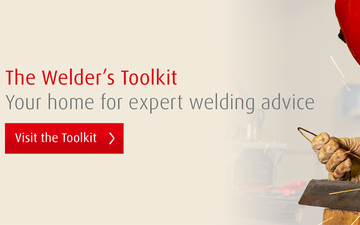- Official BOC UK Online | Industrial Gases | Products & Solutions | BOConline UK
-
Shop
- Industries
- Processes
- Gases & Equipment
-
Solutions
-
Services
-
Health & Safety
-
Contact & Support
- What's Happening
-
Net Zero Strategies
How to Get Your Team to Buy into Your Safety Culture
Posted by BOC

How is health and safety viewed in your business? Is it a priority for your entire team? Viewed as a box-ticking exercise? Under-valued and under-reported?
It goes without saying that safety is critical to workshop-based businesses, particularly where industrial gases and naked flames are being used.
But a health and safety culture also makes good business sense. According to the Institution of Occupational Safety and Health (IOSH) workplaces that are committed to health and safety are more efficient, more productive, and save money on unnecessary absences and operational downtime.
Here are five key tips to establish and maintain a safety culture:
1. Get everyone involved
A strong safety culture occurs where there is trust and a shared sense of responsibility across your team.
Get everyone involved in planning and implementing new safety procedures. Ask for their feedback on your existing workplace practices and find out what they would like to see. Hold regular safety updates and ask team members to lead the conversation.
Make sure health and safety information is visible and operate an open-door policy for people to share their concerns.
Encourage employees to report unsafe conditions and near misses to prevent serious incidents from happening.
2. Avoid the ‘blame game’
Everyone needs to feel free to speak up about safety issues, but the focus should be on root causes and how to improve collective behaviours, rather than blaming individuals.
Of course, personal accountability is important, but it’s important to think about the systems and processes that may have contributed to an incident, and consider where improvements can be made.
Share lessons learnt from incidents with employees to prevent reoccurrence in the future.
3. Reward positive behaviour
It’s easy to focus on the negatives when talking about health and safety – the number of accidents or days lost through sickness.
Consider instead, incentivising positive behaviour. The team members who always wear the right PPE. Those who carry out all of their health and safety checks before starting work and clear up carefully after themselves. Give your safety ‘heroes’ plenty of praise and the rest of your team are likely to follow.
4. Offer training
Professional training can help to embed a safety culture because it focuses on hazards and their effects, as well as ‘rules’ to follow.
Industry recognised training is also good for your brand. It demonstrates to your customers that you are committed to professional practices and the safety and wellbeing of your workforce.
5. Lead by example
If a safety culture starts with the people at the top, it’s more likely to trickle down to everyone in your workforce.
Make sure you ‘walk the walk’ by following safety guidelines and practising good safety behaviours at all times.
Schedule time to walk around the workplace and engage with employees to discuss safety topics.
For up-to-date health and safety advice for welding businesses, visit the Health and Safety Executive’s website.
Is your gas equipment due a safety inspection?
It’s a legal requirement to ensure that gas equipment used in the workplace is in a safe condition and well maintained.
An annual gas equipment safety inspection from BOC is an easy and cost-effective way to ensure the safety of your people and premises. Find out more about what a CP7 / CP47 inspection involves.

